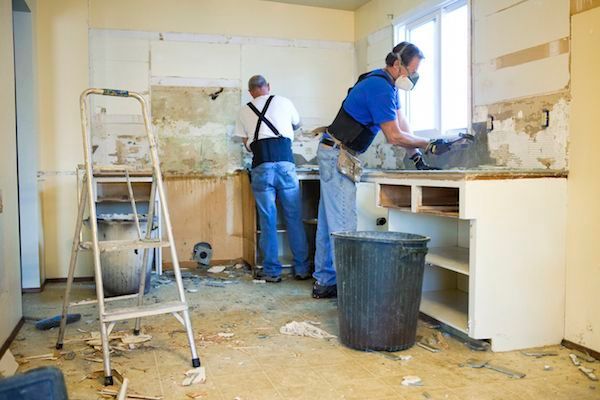Introduction: When Lifestyle Gets Expensive
You fall in love with a leafy suburb near the coast. The cafés are charming, the neighbours walk Labradors, and everything just feels right. This is where you imagine putting down roots, raising a family, maybe even working less because it’s so “liveable.”
But here’s the catch: that dream suburb could become a financial trap.
Many owner-occupiers blur the line between lifestyle satisfaction and investment potential. They assume a beautiful suburb equals a smart buy. The reality? Buying where you want to live often carries a long list of hidden costs — financial, strategic, and emotional — that don’t show up on a mortgage calculator.
This article breaks down what those costs are, why they matter, and what smart investors do instead.

The Illusion of Security: Why Owner-Occupiers Often Overpay
Owner-occupiers typically buy emotionally. They stretch for the “perfect” school zone, the polished kitchen, or the street with the heritage homes. But that emotional premium rarely translates to financial performance.
In high-demand lifestyle areas, properties are priced for liveability, not investability. You’re paying for ambience, not yield. These suburbs often attract intense competition from other owner-occupiers, which inflates prices beyond what a rational investor would pay — and far beyond what a rental return can justify.
The result? You’re buying security and comfort at a premium — and missing out on the performance metrics that actually grow wealth.
Opportunity Cost: What Could That Equity Be Doing Elsewhere?
Every dollar you spend in a lifestyle market is a dollar not working for you somewhere more strategic.
Example:
Imagine you have $300,000 to deploy as a deposit.
- You buy a $1.5M home in a prestige coastal suburb. Nice lifestyle. Modest long-term growth.
- Or, you use the same deposit to buy two $750K high-growth investment properties in major metro fringe markets with strong rental yield and capital growth prospects.
Over 10 years, the gap in your net worth could be hundreds of thousands — even millions — depending on market performance and compounding returns. The trade-off isn’t just between suburbs. It’s between comfort today and freedom tomorrow.
Limited Leverage Potential
When you live in the home you buy, it works against your borrowing capacity. Unlike an investment property, your home doesn’t produce rental income to support your loan servicing. That means your debt-to-income ratio stays tight, and your ability to leverage into further assets is severely reduced.
You become what many lifestyle buyers eventually realise too late: House rich. Cash poor. Portfolio stuck.
It’s not that your property is bad — it’s just not doing any heavy lifting. And now you don’t have the financial runway to buy again.
Upkeep, Renovations, and the Personal Spend Trap
When you live in a home, you want it to feel just right. That’s where lifestyle costs quietly balloon.
- You redo the kitchen — not for ROI, but because the marble benches looked great on Pinterest.
- You landscape the garden — not because it increases value, but because the neighbours have nicer hedges.
- You buy designer furniture, repaint feature walls, upgrade appliances… all to feel more “at home.”
This is the personal spend trap: you’re pouring capital into comfort, not performance. Investors, by contrast, make decisions based on return — not how soft the couch feels or how nice the master ensuite looks.

Lifestyle Lock-In: When Your Home Dictates Your Future
The more you personalise your home, the more it controls your life. You’re now geographically and financially anchored. Moving becomes a hassle. Selling becomes emotional. You might stay in a suburb that no longer suits your career, your kids, or your long-term goals — simply because “this is our home.”
This lifestyle lock-in limits your flexibility to:
- Take a better job in a different city
- Relocate for better schools or family support
- Downsize or upsize as your needs change
- Free up capital to invest
In other words, the home you bought for freedom can quietly become the cage that holds you back.
What Smart Investors Do Instead
The smartest investors understand this one key principle: Lifestyle and investment don’t have to live at the same address.
Instead of sinking all their capital into one high-emotion, low-performance property, they use creative strategies like:
- Rentvesting: Live where you want, but buy where the numbers work.
- Duplex-living: House hack with dual income while retaining comfort.
- Portfolio-first strategy: Build investment momentum early, then buy your dream home later — potentially debt-free.
By focusing on financial positioning before personal preference, they create more choices, more leverage, and more lifestyle freedom in the long run.
Conclusion: Don’t Let Your Dream Suburb Be a Wealth Trap
It’s not wrong to want a beautiful place to live. But if you’re serious about financial freedom, that decision needs to be part of a bigger strategy.
Your home should serve your goals — not just your emotions. And sometimes, the smartest move is to hold off on the dream suburb so your portfolio can do the heavy lifting first.
Because when you build wealth first, you don’t have to settle later. You can buy the lifestyle and the leverage — on your own terms.
Thinking about buying where you live?
Before you commit, book a
Discovery Call Session with us at Living Property. We’ll walk you through what your money could be doing elsewhere — and help you make the smartest decision for your future wealth.
Start With An Obligation Free Consltation
Our Obligation Free Consultations are designed for you to ask us anything you like and start the process of uncovering a strategy suited to your circumstances.

